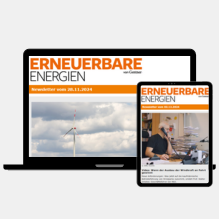Perfect symbiosis of solar park, substation and battery storage


Storage and solar power: How the model can be successfully implemented.
Impressive figures are currently circulating regarding the storage market: According to the German Association of Energy Storage Systems (BVES), the market segment for large-scale storage systems grew by 14 percent last year. Currently, approximately 2,000 megawatts (MW) are connected to the grid, the association reported. Considering the number of grid connection requests for battery storage systems, which the transmission system operators estimate at 650 requests for a total capacity of 226,000 MW, a veritable boom in the storage market can be expected – even if not all of these projects will be realized.
Energy transition needs storageThe energy transition undoubtedly requires storage options. Storage is the fastest, most cost-effective, and most efficient tool for integrating green electricity into the power grid and the electricity market. An energy system based primarily on solar and wind energy needs flexibility options such as battery storage to ensure security of supply. And the storage market is currently attractive. The acquisition costs of battery storage have fallen sharply in recent years, increasingly ensuring their economic viability. Equipping ground-mounted photovoltaic systems with battery storage is therefore the logical consequence. The Federal Network Agency's innovation tenders were the right step to give this grid- and system-beneficial technical solution the necessary boost. Trianel has also been able to gain experience in the planning and construction of hybrid power plants and has now commissioned four combined power plants consisting of ground-mounted systems and battery storage. Trianel is convinced that affordable electricity from ground-mounted PV systems (and wind energy) combined with battery storage is the model of the future. The corporate strategy of the project development subsidiary Trianel Energieprojekte therefore relies on the triad of open space, substation, and storage. This relieves the burden on grid operators during grid expansion while simultaneously contributing to grid stability.
It is advisable not only to consider storage for new projects, but also to consider the retrofitting of battery storage at existing sites. After all, in these cases, both the space and the grid connection are already in place. Grid connection points experience higher utilization by being built over with complementary technologies, which can ease the burden on grid expansion. At the same time, marketing solar power with a co-located storage system offers additional revenue opportunities.
But what sounds like a successful energy transition project on paper is reaching its limits in practice. Delays in obtaining building permits, construction time restrictions, and explosive ordnance clearance are now already taken into account during planning – but the main bottleneck remains the grid connection. Medium-voltage grid capacities are regularly already exhausted. Grid expansion has been lagging behind for many years. Many projects have stagnated due to outstanding grid connection commitments. Therefore, Trianel took control of grid access in 2020 and built several substations on its own, including in the Bitburg region and in Nauen, Brandenburg.
In some solar projects, the lack of grid expansion is now leading to absurd situations. For example, one of the planned Trianel projects is missing the crucial grid route – which is now being built by Trianel because the municipal project developer can do it faster and more cost-effectively than the local grid operator. In return, the grid operator contributes to the costs – a reversal of cost-bearing!
Transparency in grid connection requestsA constructive exchange forum between project developers and grid operators would be desirable to jointly find solutions for flexible grid connection contracts that enable both grid-friendly and cost-effective system-friendly operation of storage systems. Creating the greatest possible transparency in grid connection requests is crucial. Non-binding inquiries from projects without the appropriate project maturity must not be allowed to paralyze grid operators and thus block capacity for urgently needed grid expansion. The discussion on construction cost subsidies and feed-in grid fees for storage systems and renewable energies must not be conducted exclusively from the grid side, but must focus on system serviceability.
Project development remains on trackDespite all these discussions, Trianel is continuing to push ahead with the project development of ground-mounted systems combined with battery storage. In addition to the 510 MW of solar energy already installed in recent years, solar parks with a capacity of 100 MW, equipped with 100 MWh of storage capacity, are planned to be added this year. The first of these is already ready for construction and is in the ordering process; two others have received approval, but unfortunately, the grid operator's approval for charging the batteries from the grid is still pending.
The German energy system is facing a massive paradigm shift. System flexibility is crucial for the successful integration of renewable energies. Battery storage has the potential to become a game changer. What is crucial now is to create reliable framework conditions, particularly for grid access, that continue to enable investments in flexibility options such as battery storage.
Author: Andreas Lemke, Head of Solar Department, Trianel GmbH Trianel at Smarter E: B5 109

Trianel

With our newsletter you will regularly receive selected information and news, bundled and free of charge, directly to your inbox.
erneuerbareenergien





